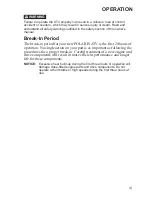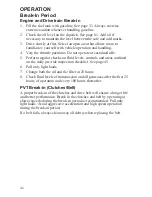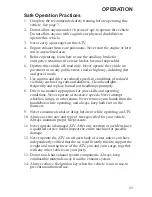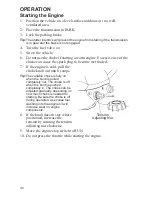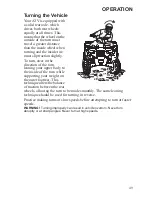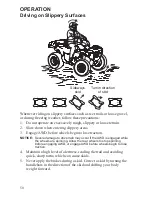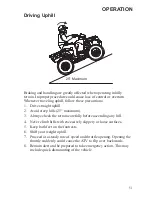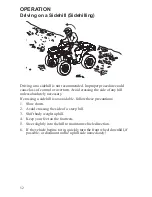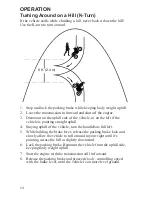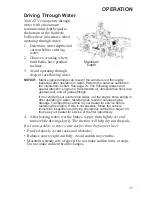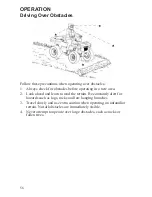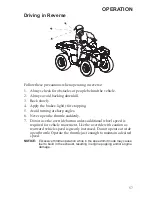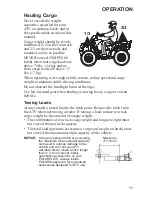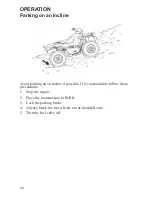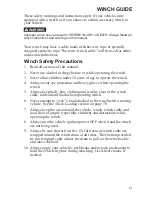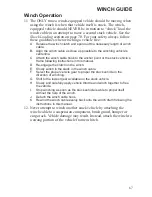
55
OPERATION
Driving Through Water
Your ATV can operate through
water with a maximum
recommended depth equal to
the bottom of the footrests.
Follow these procedures when
operating through water:
1. Determine water depths and
current before entering
water.
2. Choose a crossing where
both banks have gradual
inclines.
3. Avoid operating through
deep or fast-flowing water.
NOTICE:
Major engine damage can result if the vehicle is not thoroughly
inspected after operation in water. Perform the services outlined in
the maintenance chart. See page 74. The following areas need
special attention: engine oil, transmission oil, demand drive fluid, rear
gearcase oil, and all grease fittings
.
If the vehicle tips or overturns in water, or if the engine stops during or
after operating in water, restarting can result in serious engine
damage. Transport the vehicle to your dealer for service before
restarting the engine. If this is not possible, follow the vehicle
immersion inspection and drying procedures outlined on page 104,
then see your dealer for service at the first opportunity.
4. After leaving water, test the brakes. Apply them lightly several
times while driving slowly. The friction will help dry out the pads.
If it’s unavoidable to enter water deeper than the footrest level:
• Proceed slowly. Avoid rocks and obstacles.
• Balance your weight carefully. Avoid sudden movements.
• Maintain a steady rate of speed. Do not make sudden turns or stops.
Do not make sudden throttle changes.
Maximum
Depth

